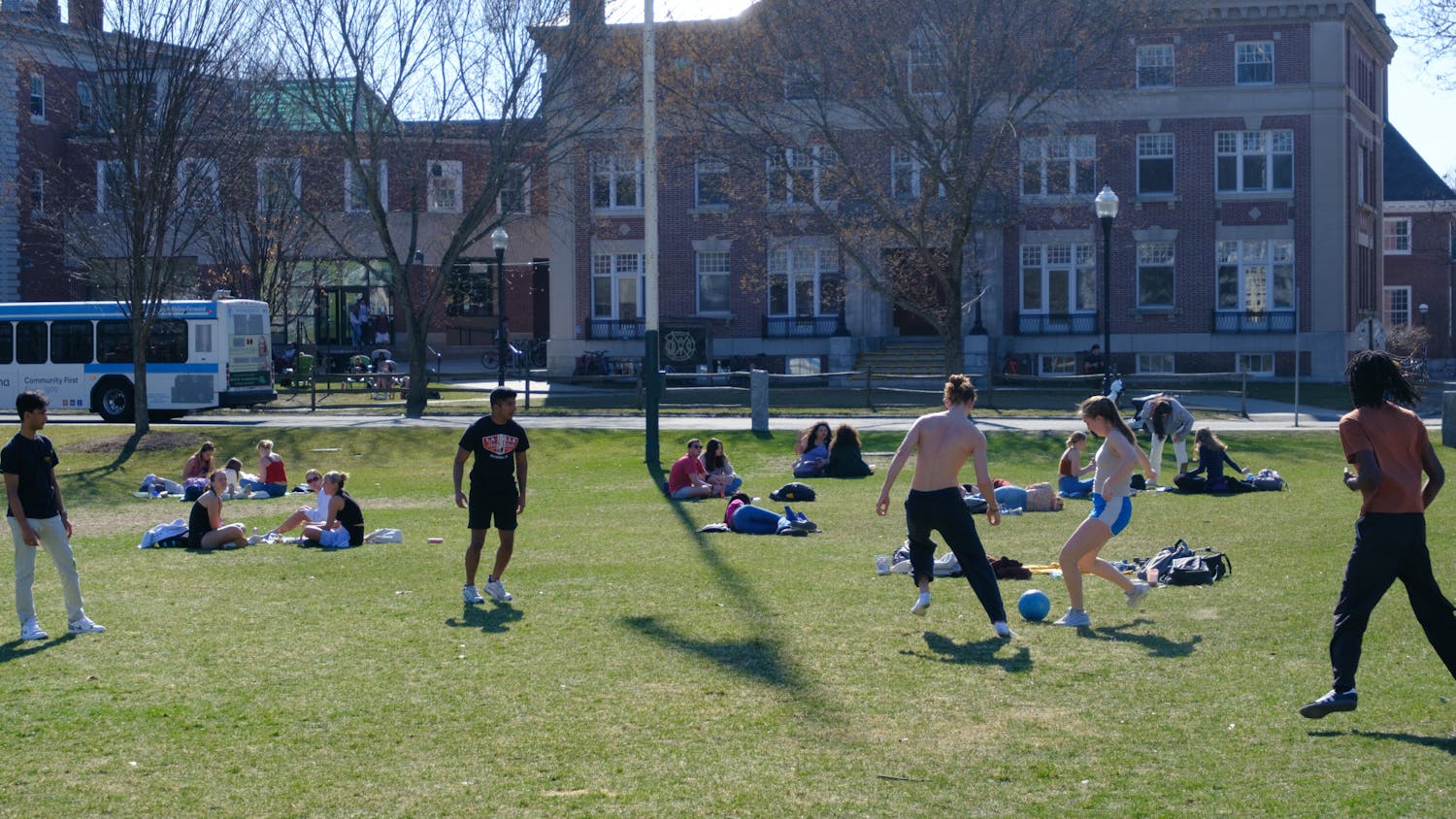Nine School Street is haunted. Many residents of the 19th-century mansion — today known as the Panarchy undergraduate society — firmly believe that spiritual presences both malevolent and benign haunt the building behind its massive columns.
The spirit that haunts the building — once the home of Phi Kappa Psi fraternity — is known as Emily. All records indicate that the daughter of John Richards, a local minister and physician, was kept within the white manor for almost the entirety of her life. The town’s physician, Dr. Frost, noted that “there may have been another child [in the family] who died young.”
Indeed, Emily Richards (no relation to me — hopefully) died at age 12 in 1850. She was kept in what is today Panarchy’s bunk room, a large space that once housed numerous fraternity members before the house became coeducational in the 1970s.
“I’ve had friends who have gone up into the cupola and seen Emily’s reflection in the window staring back at them,” Andrea Nease ’17 said.
Legends within Panarchy state that Emily may have completed suicide, but medical records say she died from “an inflammation of the head.”
Panarchy president Sam Van Wetter ’16 said that Emily might have been locked away due to tendencies or preferences that were not socially acceptable in the mid-19th century. Emily’s “mental illness” may have been a cryptic way of saying she was lesbian, Van Wetter speculated.
Today, Panarchy — which has roughly 60 members on campus — considers itself a diverse and welcoming group with open membership, and Van Wetter said he imagines that Emily’s spirit likely approves of the house’s more accepting direction.
“I think it’s become a good place to be queer,” he said. “She was just kind of denied as a person. I think from being so oppressed and suppressed when alive, after death she has just kind of put her spirit into the house more.”
Before becoming Panarchy in the mid-1990s, 9 School St. was Phi Sigma Psi, a local fraternity, and before that it was Phi Kappa Psi, a major national fraternity that came to Dartmouth in 1896 and bought the building now known as Panarchy.
Phi Kappa Psi had a wealthy, urbane reputation. The house hosted annual invitation-only banquets featuring elaborate menu cards and invitations, many of which are still available in Rauner Special Collections Library. One gold-embossed pink menu card for the fraternity’s 1904 initiation banquet included lobster salad, “fancy cakes,” brandy jelly and cigars as components of an elaborate, multi-course meal.
The fraternity’s heyday may not have been a happy time for Emily’s ghost, Van Wetter said.
“Phi Sigma Psi was kind of the gay house on campus, but it was kind of repressed, and I imagine it was pretty torturous for her to live through that repression,” he said. “Frat boys probably just don’t connect in the same way to her, so maybe she just isn’t as available a presence.”
Emily has become an emblem for the house and a protector against other, darker forces at work. While Emily is considered an honorary Panarchist — as Panarchy’s members are known — and even invited to the house’s termly Great Gatsby-themed party, the more malevolent spirits said to haunt Panarchy’s basement are treated with greater caution.
“I’d say that the Panarchists are friendly with Emily, but whatever’s in the basement, I hope it stays there,” Nease said. “That is something dark.”
Recently, Linda Szyknowicz — Nease’s mother — visited Panarchy and asked to see the building’s basement. Szyknowicz and Nease entered the basement and spent several moments in it before running back out.
“As we were walking up the stairs, halfway up the stairs [my mother] was pushing me and screaming, ‘Go, go, go!’ and when we got up, I think she slammed the basement door, and she’s like, ‘something grabbed me,’” Nease said.
The basement includes a locked room that houses a monument built by Phi Kappa Psi for the members of the house who died in the First World War, Van Wetter said.
“These are ’16s and ’18s and ’19s, but from a century ago,” he said.
Additional rumors suggest that alumni practiced satanic rituals in the room and the Free Masons used it for sacrifices, Nease said.
Although no one is buried in the room, it is still haunted, she said. Nease lives on the house’s first floor, near the stairs to its basement.
“A few weeks ago, in the middle of the night, I woke up to the sound of the basement door screeching across the floor,” she said. “If you’re alone in the house, you feel like something’s there, especially when you’re in the basement. I would never go in the basement alone, ever.”
Most of Panarchy’s members are not skeptical about the presence of ghosts in the house, Van Wetter said.
“There are some people there who are in complete and absolute denial, but I think that’s just for the safety of their minds,” Nease said.
Van Wetter said that there is no doubt at all that the tales of Emily and the First World War tomb room are true.
“It’s not a theory, it’s a fact and more,” he said.
Panarchy has been undergoing extensive construction for over a year following a failed fire inspection.
“It’s definitely a place of spirits, and I think they’re getting upset that there’s construction going on,” Van Wetter said. “I think [Emily’s] been a little bit on edge because she’s had pieces of her house getting messed with.”
Spiritual activity has decreased since construction began, Nease said. Additionally, the building’s cupola has been closed off for renovations, meaning a prime location for interactions with Emily has not been accessible for several terms.
Panarchy is not a place of good or evil spirits, Nease said. Emily and the First World War-era spirits of the basement create a balance between them, she said.
“[Emily’s] kind of like the shining light up in the cupola, and there’s some darkness in the basement, but it’s kept at bay,” she said.
Although Dartmouth’s campus is old, ghost stories are not common. Panarchy, however, is not the only building on campus that with rumors of spirits hanging around after their death. Nine people lost their lives in the building of Theta Chi fraternity, now Alpha Theta fraternity, when a crack in the house’s coal furnace flue-pipe leaked carbon monoxide into the house. Many people have since felt the presence of others in the fraternity, including one who claimed to have seen seven men wearing old-fashioned woolen suits.
Even in the very oldest buildings, tales of the supernatural are few and far between. Still, in old residence halls — including Massachusetts Row, the Gold Coast and Butterfield Hall — spooky sounds can be believed to be ghosts from time to time.
Ethan Isaacson ’18 claims to have seen a ghost in the Massachusetts Hall basement this month while he was working on a homework assignment late at night.
“I heard a rustling and there was no one there,” he said. “And as we all know, things that cannot be explained by our observations are best explained by irrational conjuring of the supernatural.”
Nease is a former member of The Dartmouth Staff. Van Wetter is a member of The Dartmouth staff.




